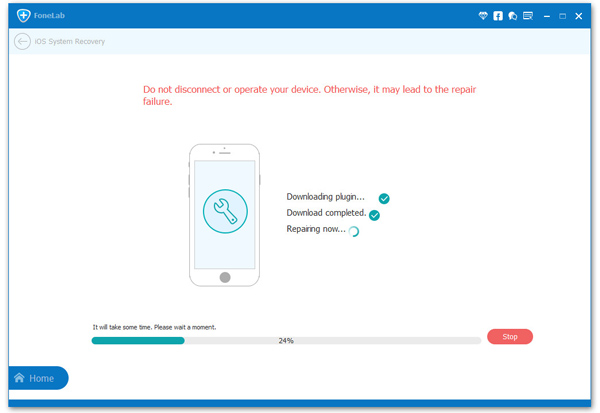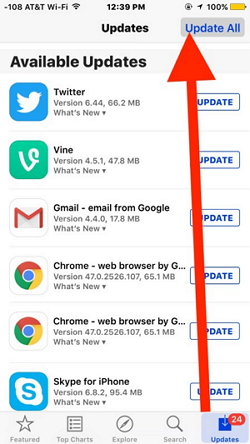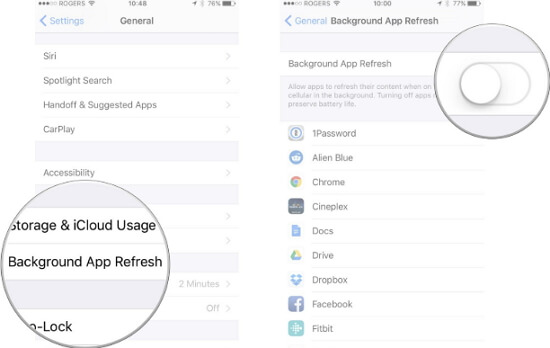iPhone Data Recovery
 Phone to Phone Transfer
Phone to Phone Transfer
The easy 1-Click phone to phone data transfer to move data between iOS/Android/WinPhone/Symbian
Restore-iPhone-Data Products Center

 Android Data Recovery
Android Data Recovery
The Easiest Android data recovery software to recover Android lost or deleted Files
 Phone Manager(TunesGo)
Phone Manager(TunesGo)
Best iOS/Android phone manager tool to manage your phone’s files in a comfortable place
 Phone to Phone Transfer
Phone to Phone Transfer
The easy 1-Click phone to phone data transfer to move data between iOS/Android/WinPhone/Symbian

iOS Toolkit
A full solution to recover, transfer, backup restore, erase data on iOS devices, as well as repair iOS system and unlock iPhone/iPad.

Android Toolkit
All-in-one Android Toolkit to recover, transfer, switch, backup restore, erase data on Android devices, as well as remove lock screen and root Android devices,especially Samsung phone.
[Summary]: Many iPhone users complain that their iPhone is running slow after updating to iOS 13. If you have the same problem, don’t worry, this guide will give you some tips to help you fix iPhone slow down after iOS 13 update.
iOS 13 is a big update. There are two major changes that will change the way you use your iPhone – Dark Mode and Sign in with Apple – and Apple gives some long-time apps impressive overhauls in Photos and Maps. iOS 13 has some exciting new features, but many iOS users complain about old iOS devices (like iPhone 6s, iPhone 6s Plus, iPhone SE, iPhone 7, iPhone 7 Plus, iPhone 8, iPhone 8 Plus, iPhone X, iPhone) XS, iPhone XR, iPhone XS Max) runs slowly after updating to iOS 13. To fix iOS 13 slow down iPhone, some users will choose to downgrade iPhone/iPad from iOS 13 to iOS 12.4, iOS 12.3, iOS 12.1. In fact, in addition to downgrading iOS, there are other ways you can fix it. Has your iPhone slowed down after updating to iOS 13? Here is how to troubleshoot iPhone that’s running very slow after iOS 13 update.
Generally, this kind of iPhone running slow issue is always the result of software errors after iOS upgrade. iOS System Recovery is designed to get any iOS devices with issues to normal. iOS System Recovery enables you to fix iPhone/iPad/iPad from DFU mode, recovery moede, Apple logo, headphone mode, etc. to normal state without data loss. Below is the steps to fix the issue of ‘iPhone running slow after iOS 13 update’ with help of iOS System Recovery.
Features:
Fix disable iOS system problems, such as iPhone is stuck in Recovery mode, DFU mode, Apple logo, iPhone not sharing wifi password, frozen issues, etc.
Any iTunes errors including iTunes error 9, 3194, 54, etc. could also be resolved in one click.
Extract data from disable iOS devices without data loss.
It is safe and easy to use.
Launch the iOS System Recovery program after downloading it on your computer. Afterwards, choose the feature of “iOS System Recovery’ from main interface.

Next, plug your iOS 13 device to the computer with an USB cable and click ‘Start’. The program will detect the device information after you entering the device into DFU mode.

Note: iOS System Recovery will offer the instructions on how to put iPhone into DFU mode.
Click the ‘Repair’ button and the program will download the latest firmware to fix the slowing bug for iOS 13 devices.

After the launch of the new iOS update, developers of third-party applications will also push for application updates in order to maintain performance stability and optimization. Unupdated apps are not compatible with the new iOS 13 and may slow down your device. To speed up your device, update the apps in it. Simply go to the “App Store” and touch the Update button next to the app or Update All to install multiple apps updates at once.

Another reason for a lagging iOS 13 beta /iOS 13 could be the processing of too many apps. If you are an iPhone X/XS (Max)/XR user, go to the home screen and swipe up on the app you want to close. Insufficient space on the device is also the reason why the iPhone is running slowly. If your iPhone is running slow on iOS 13, you can remove unwanted photos, videos and other data files from your device to speed up your iPhone.
Many times, a sluggish iPhone can be fixed by simple rebooting it.
Restart iPhone 8 or earlier:
1. Press and hold the power button. After a few seconds, a slider will appear on the screen.
2. Drag the slider to the right and your device should be turned off.
3. Then press and hold the power button until the Apple logo appears. Then the phone should restart normally.
Restart iPhone X or higher:
1. Press the power button (on the side of the iPhone), then while holding down on it, press and hold any of the Volume buttons. After a few seconds, a slider will appear on the screen.
2. Drag the slider all the way to the far right. Your phone should be turned off.
3. Please wait for a while to completely shut down the device. Then press and hold the power button until the Apple logo appears. Then the phone should restart normally.
Background apps can also affect the overall performance of your device in time especially when multitasking with your iPhone. To fix iPhone slow down after upgrading to iOS 13, you should disable the Background App Refresh feature by going to Settings > General on your iPhone then switch off Background App Refresh option.

Besides that, you can also clear cache, cookies, and data from the Safari app. To do this, you should tap Settings-> Safari-> Advanced-> Website Data-> Remove All Website Data; Disable the Automatic Downloads by going to Settings > iTunes & App Store > and turn all the Automatic Downloads off.
If none of the above fixes do what you want, you can try to restore your iOS 13 device to factory settings, but it will erase all data and files on your device and your iPhone looks like a new one. If you insist on doing this, you can go to “Settings” > “General” > Reset” > “Erase All Content and Settings“. Now, please type your passcode and hit “Erase All Content and Settings” again.

How to Fix iOS 13 Upgrade Stuck on Apple Logo
[Solved] How to Fix iOS 13 Update Bricked My iPhone/iPad
How to Fix iPhone Stuck in Recovery Mode When Upgraded to iOS 13
How to Fix iPhone Photos Disappeared after iOS 13 Update